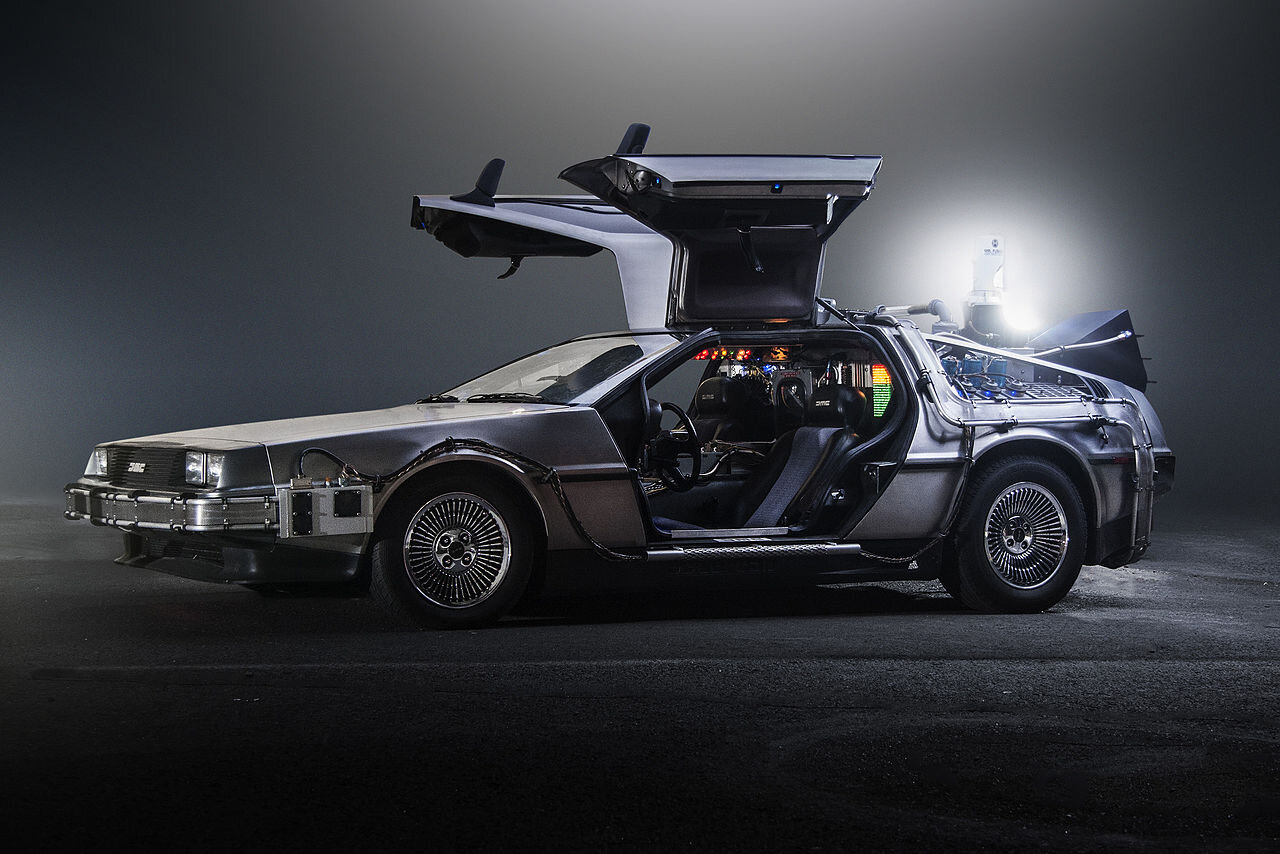ARTICLE (007) - The Complex Future (and past) Of Flying Cars
For decades, automobile manufacturers and sci-fi authors alike have been trying to imagine the future of small-scale travel. Inevitably, the subject turns to aviation. It seems, almost universally, that most think we will take to the skies in decades to come.
The subject of flying cars brings up plenty of questions, including technical issues and the viability of local Air Traffic Control, but one of the biggest is this: why, for so many years, did every flying vehicle still look like a car?
Airspeeders racing. Photo Courtosy of Transport Up
Airspeeder, which calls itself “the Formula 1 of the skies” is set to change all that. With competitors driving (or rather piloting) performance electric vehicles with a top speed of almost 100mph and a 0-60mph of 2.3 seconds, this is a new breed of racing.
Racers compete on electronically governed tracks in the sky, with augmented reality live streams coming to viewers direct from pilots themselves.
And, best of all, Airspeeder’s signature MK.4 looks very little like a car.
The famous DeLorean from Back To The Future. Photo: Wikipedia
Flying Facts and Fiction
It makes sense to assume that flying vehicles of the future will look more like scaled down light aircraft than cars, but that hasn’t typically been the case. Early flying automobile prototypes by companies like Terrafugia and AeroMobil, for example, always looked more like cars with wings and turbines than anything else.
Likewise, fictional flying vehicles such as Doc Brown’s DeLorean (“where we’re going, we don’t need roads”), Korben Dallas’ flying cab in The Fifth Element,and even Luke Skywalker’s battered landspeeder feel more like cousins of cars than airplanes.
George Jetson’s UFO-like flying car seems like a notable exception but was actually inspired by Ford 1954 FX-Atmos concept car. Why, even in fictional worlds limited only by imagination, was this the case for such a long time?
The involvement of companies like Porsche, Hyundai and Rolls-Royce in the real-world production of flying vehicles goes some way towards explaining it; automobiles are a big part of their heritage. But that’s far from the only reason.
The Fear Factor
In The Atrocity Exhibition, JG Ballard describes the car as “an iconic entity that combines the elements of speed, power, dream and freedom within a highly stylized format that defuses any fears we may have of the inherent dangers of these violent and unstable machines.”
Almost everybody knows someone with a fear of flying, whereas amaxophobia (a fear of driving) is much less common. As Gary Numan sang in his 1980s hit Cars, inspired by a road rage incident a few years prior, “Here in my car, I feel safest of all.”
Gary Numan. Apparently, he feels safe in (or leaning on) his car to this day...
A survey taken during the pandemic found that 30% of Americans had taken a “mini-break” by driving around their neighbourhood. Almost a quarter took long drives to clear their head, and 16% admitted to sitting on their driveway listening to music or audiobooks.
Driving a car might be the most dangerous thing that most of us do on a daily basis, yet it’s something that we’ve grown accustomed to doing...in a way that none of us, except perhaps the most frequent of flyers, have done with getting on a plane. That’s a real hurdle for flying vehicles.
Airspeeder isn’t the first racing series to take place in the skies – the Reno National Championship Air Races have been going since 1964, and the Red Bull Air Races (which folded in 2019) were popular enough to be televised around the world.
But they involved planes, not cars. And that’s one reason Airspeeder occupies a unique position that sets it apart from air racing of the past.
Reno Air racers.
The Ins and Outs of Airspeeder
Moving away from the shape of more traditional automobiles, Airspeeder’s MK.4 adopts the look and mechanics of a quadcopter. In that respect, it has something in common with Airbus’s Vahana, the Moog SureFly and the Ehang 184.
And, on a much smaller scale, drones like DJI’s Mavic or Phantom and the 3DR Solo. Drone racing is, slowly but steadily, becoming more popular. People are starting to fall in love with the exciting possibilities that drones offer, in everything from film-making to autonomous deliveries.
The fact that Airspeeder’s vehicle of choice bears more than a passing resemblance to a drone, albeit an ultra-high tech one, could prove incredibly valuable for the future of flying cars.
Combining the thrills of drone racing with some of the tenets of more traditional auto racing – pit stops for changing batteries rather than tyres and, yes, some of those classic lines of vintage Formula 1 cars – conflates the future of auto racing with its past in a very real way.
The more Airspeeder racers (and other flying vehicle trials) that are conducted and concluded safely, the more comfortable people will become with the idea of vehicles that can fly. We’re already seeing a similar trend in the adoption of self-driving vehicles, although many potential buyers still remain sceptical of those as well.
Beyond that, if Airspeeder develops a following, it may be what finally convinces the general public that flying vehicles don’t have to (and maybe even shouldn’t) look like cars that were designed to work on wheels.
If and when that happens, all sorts of design possibilities that might currently seem too radical could suddenly become fair game. When talking about innovation and flying vehicles the sky, if you’ll excuse the pun, is the limit.
You can lean more about Airspeeders by visiting their website: Airspeeders.com





